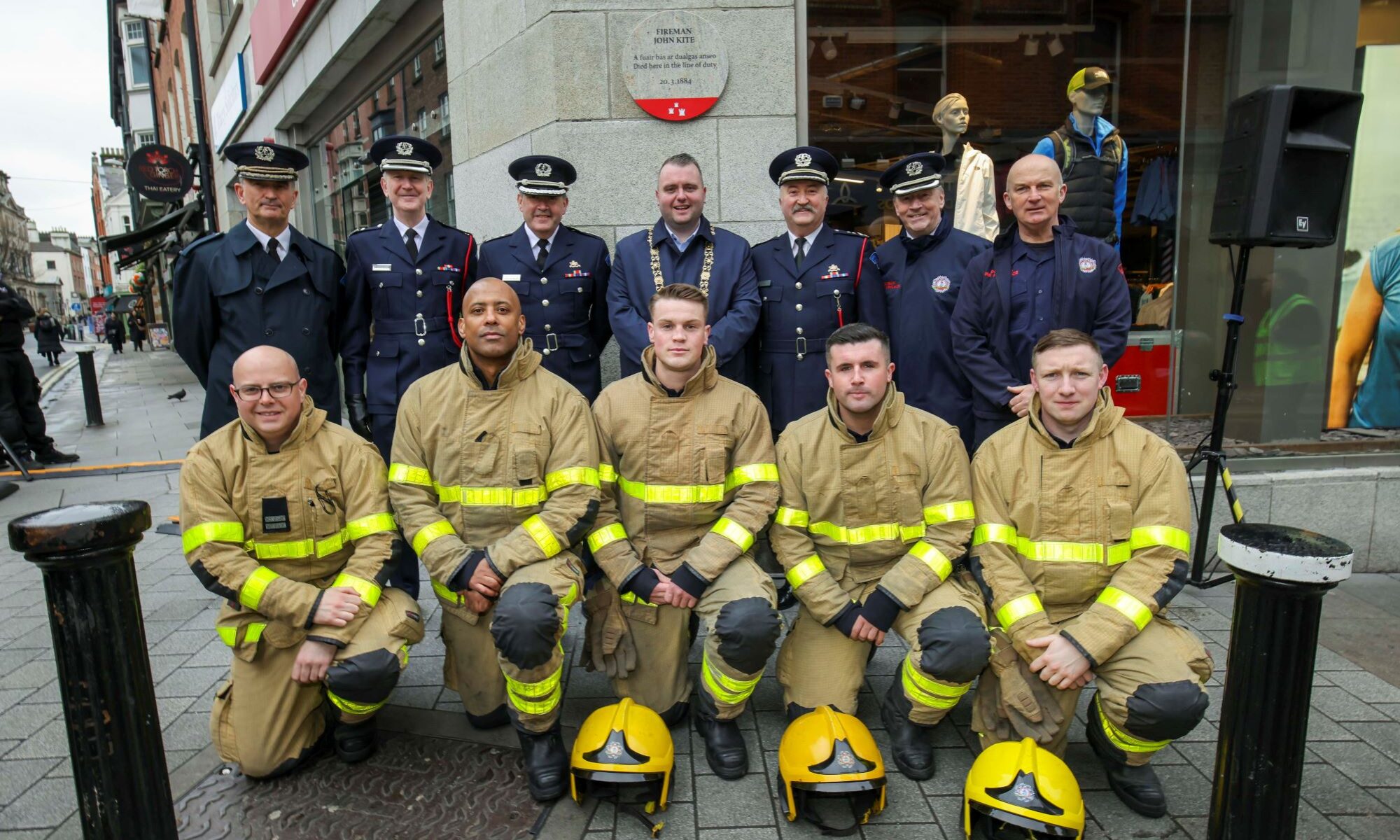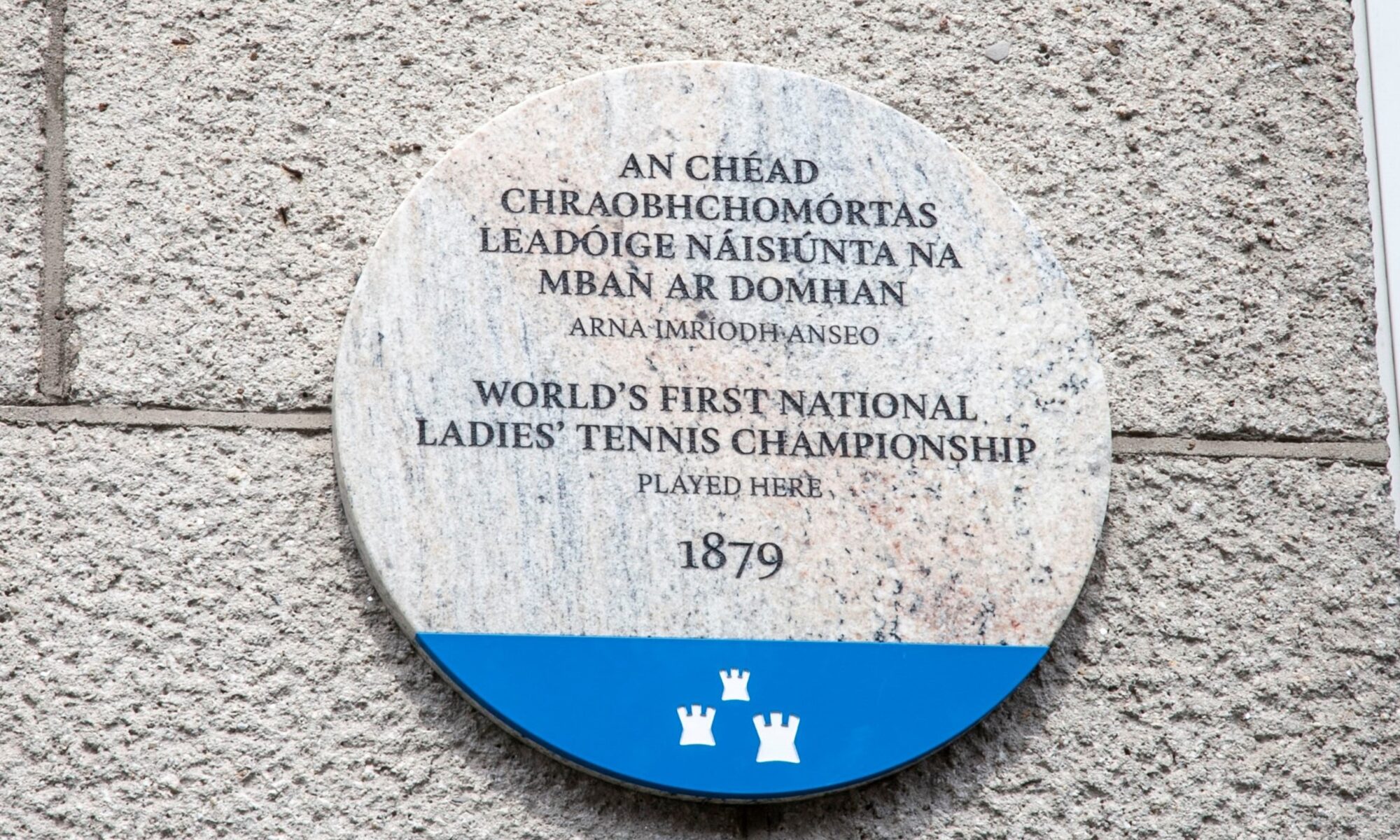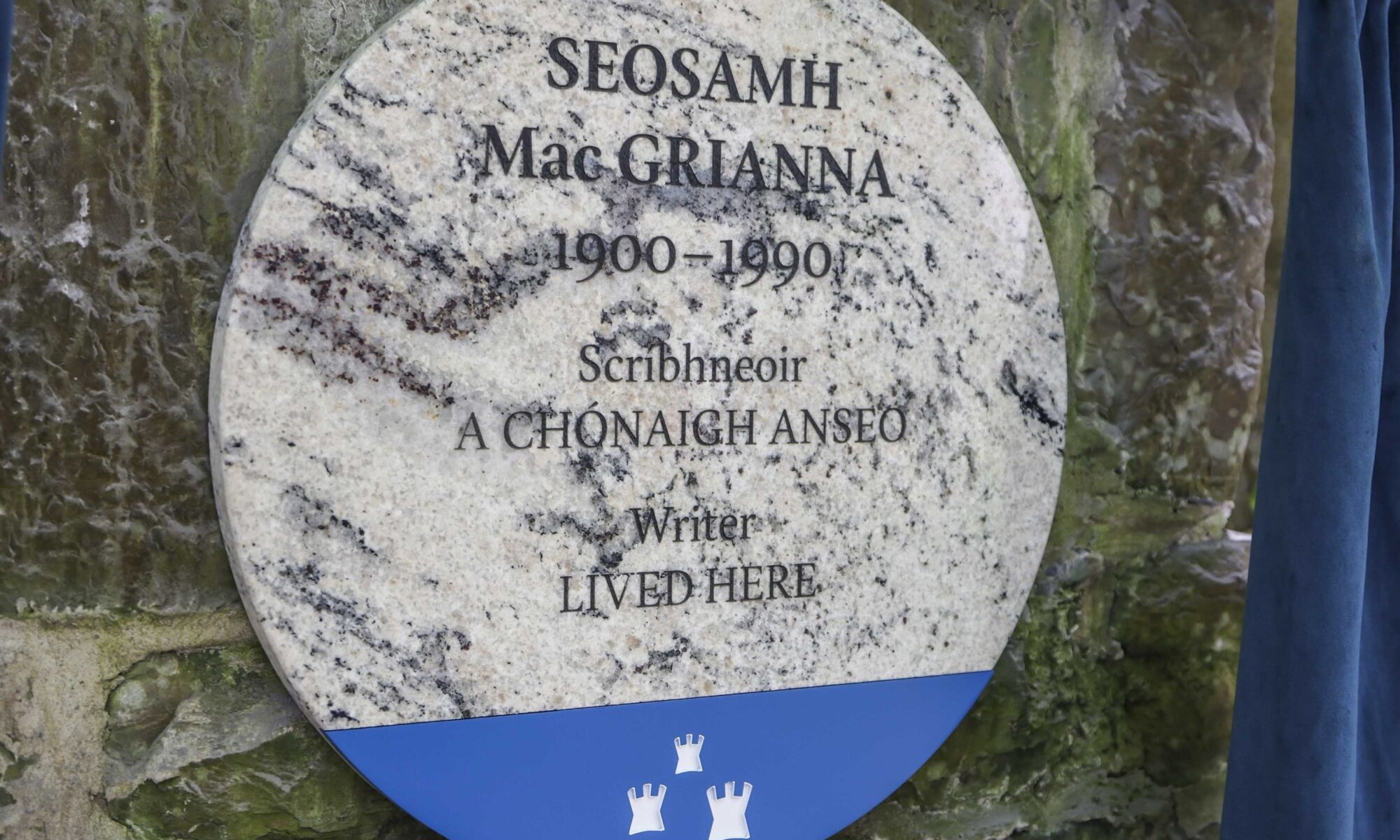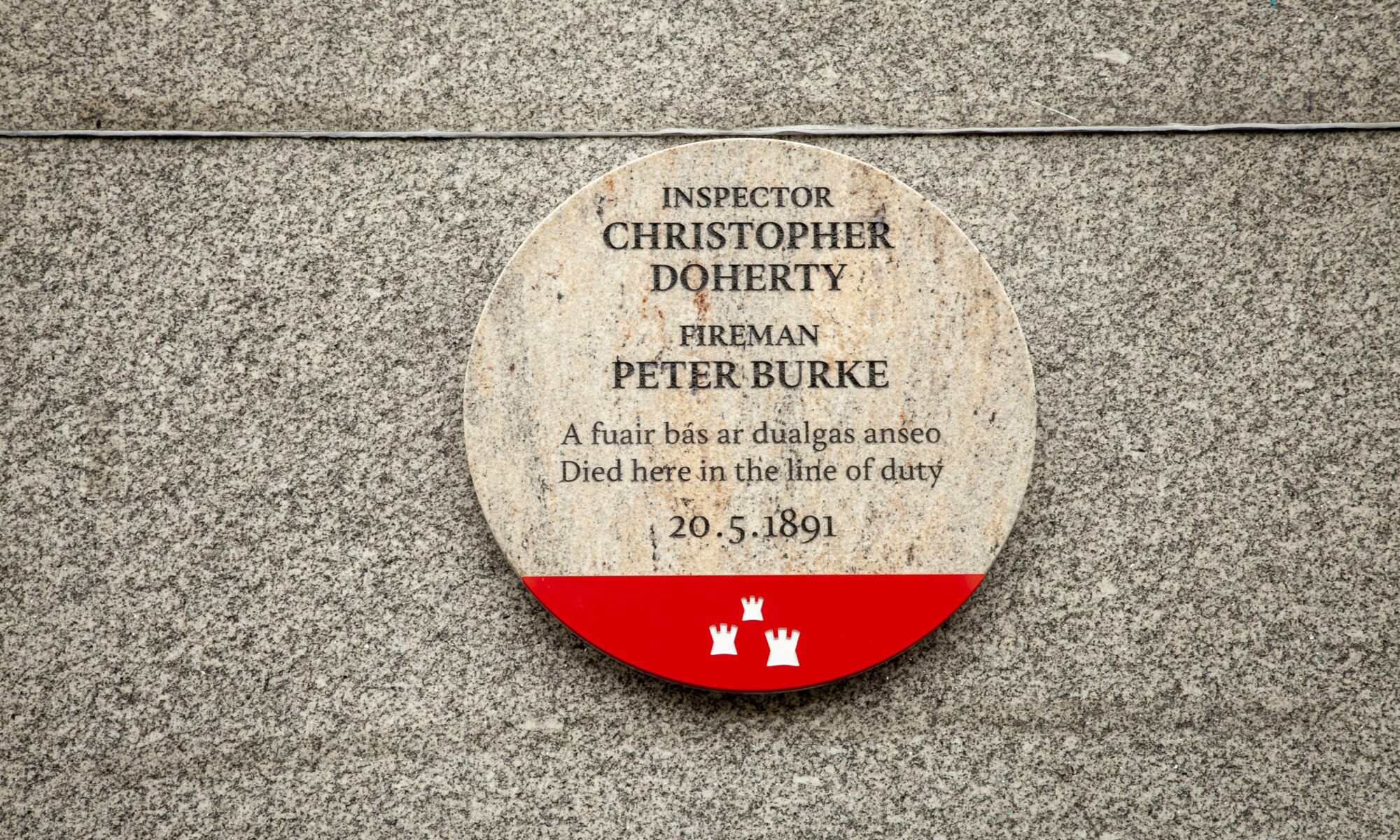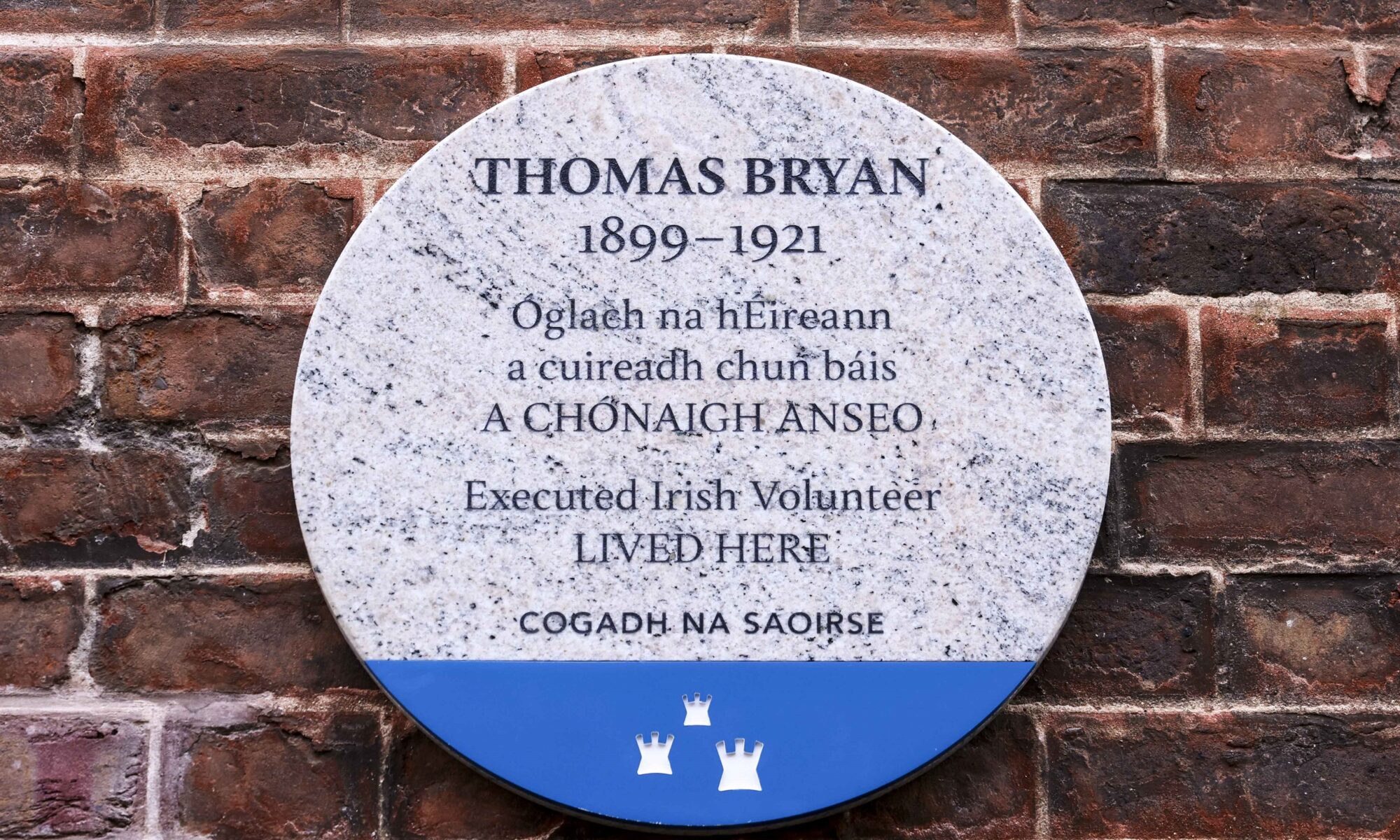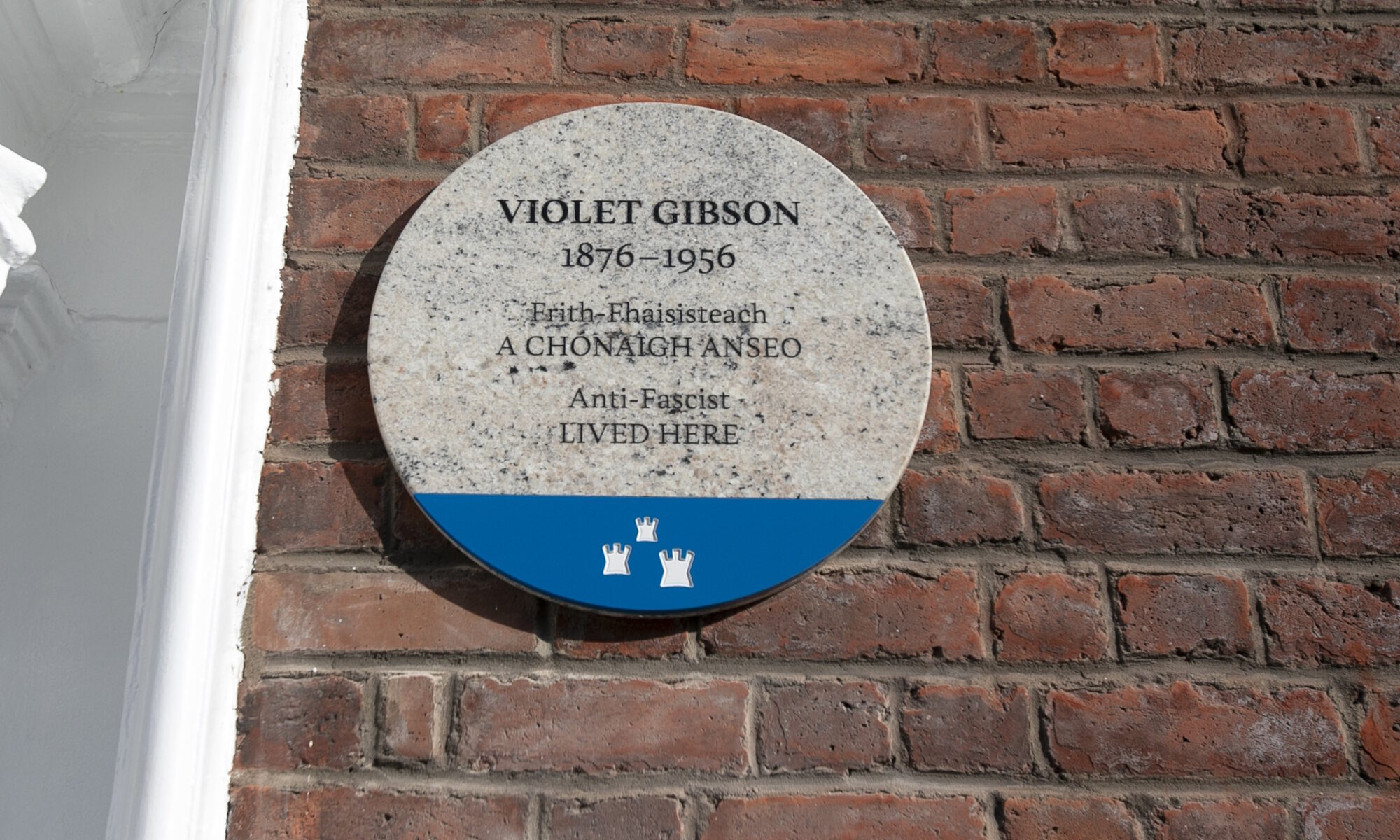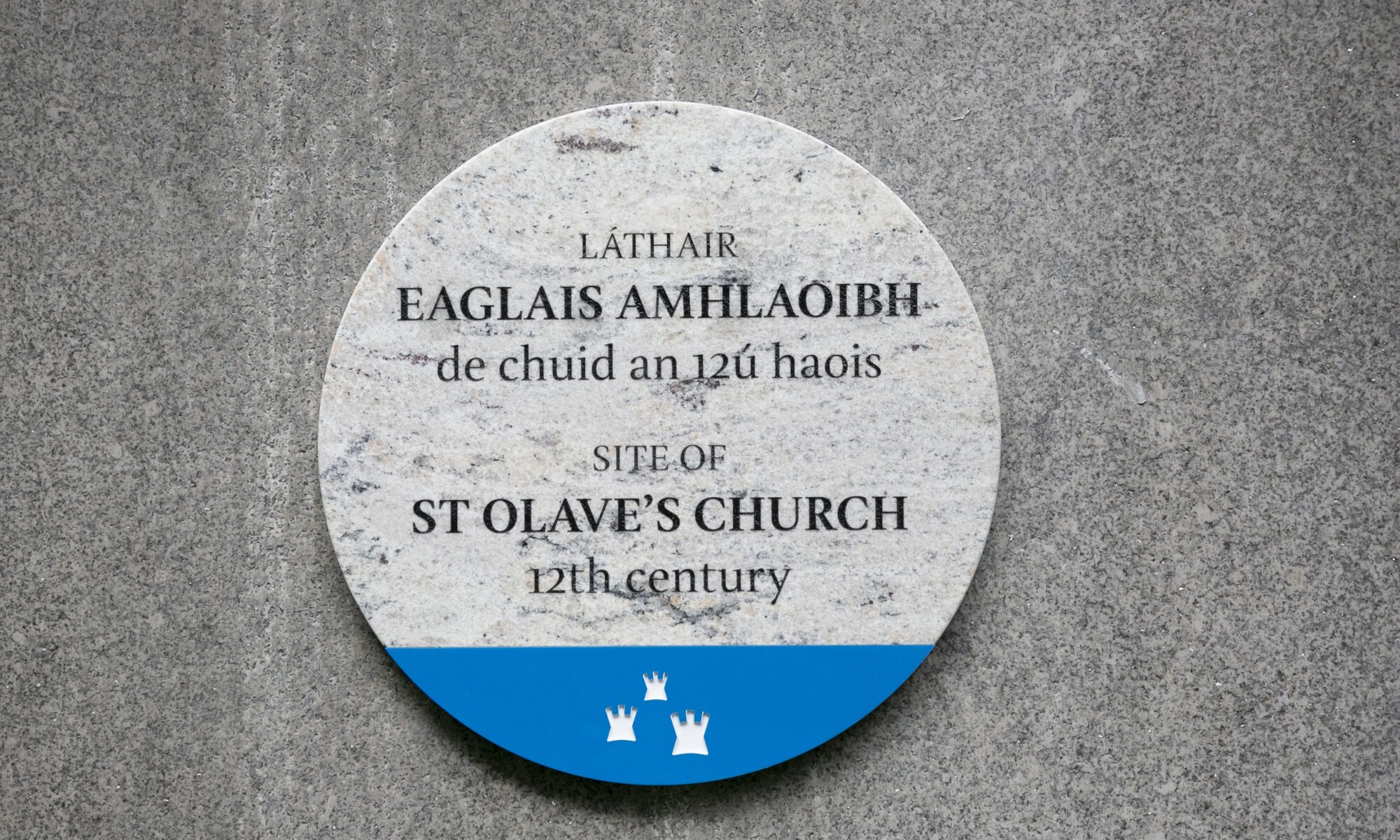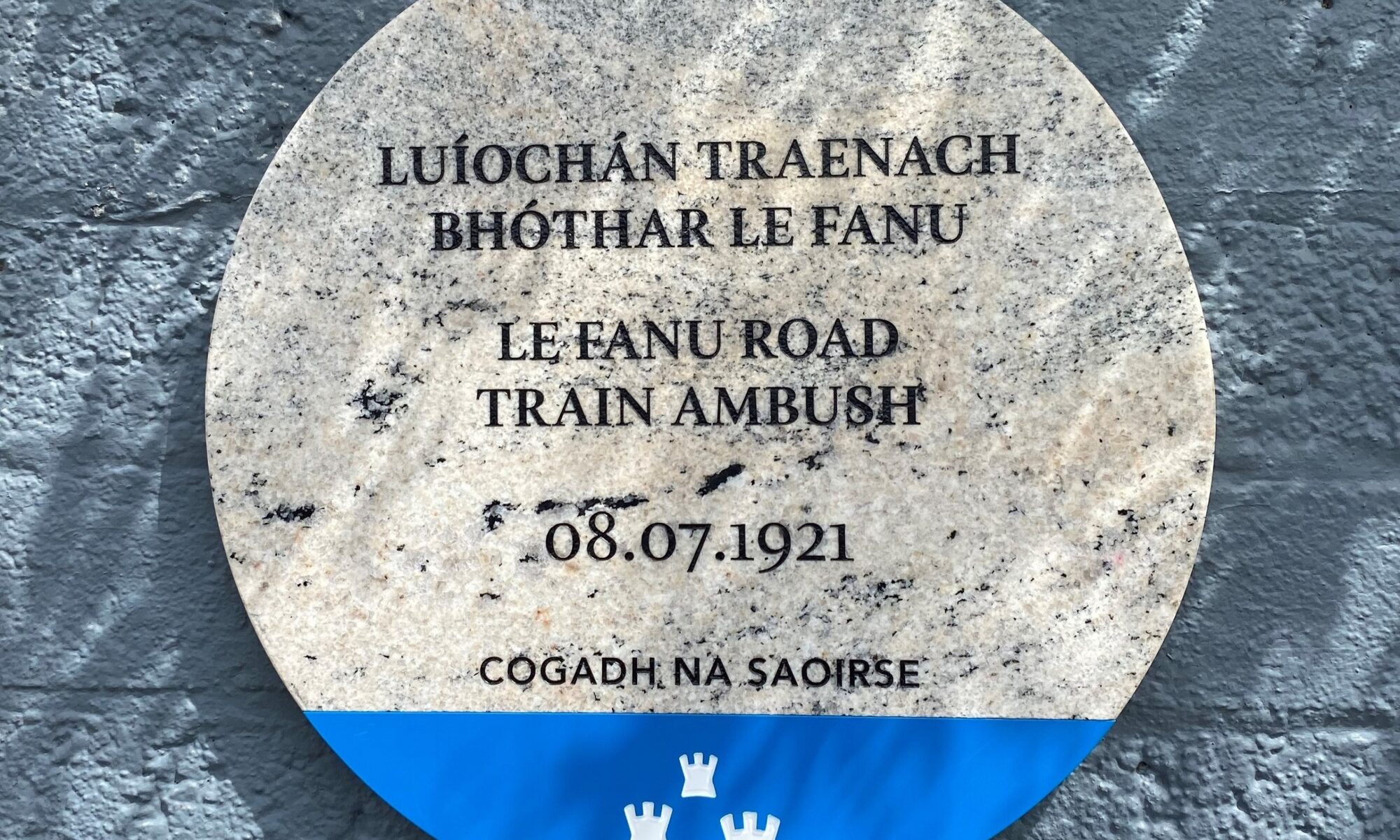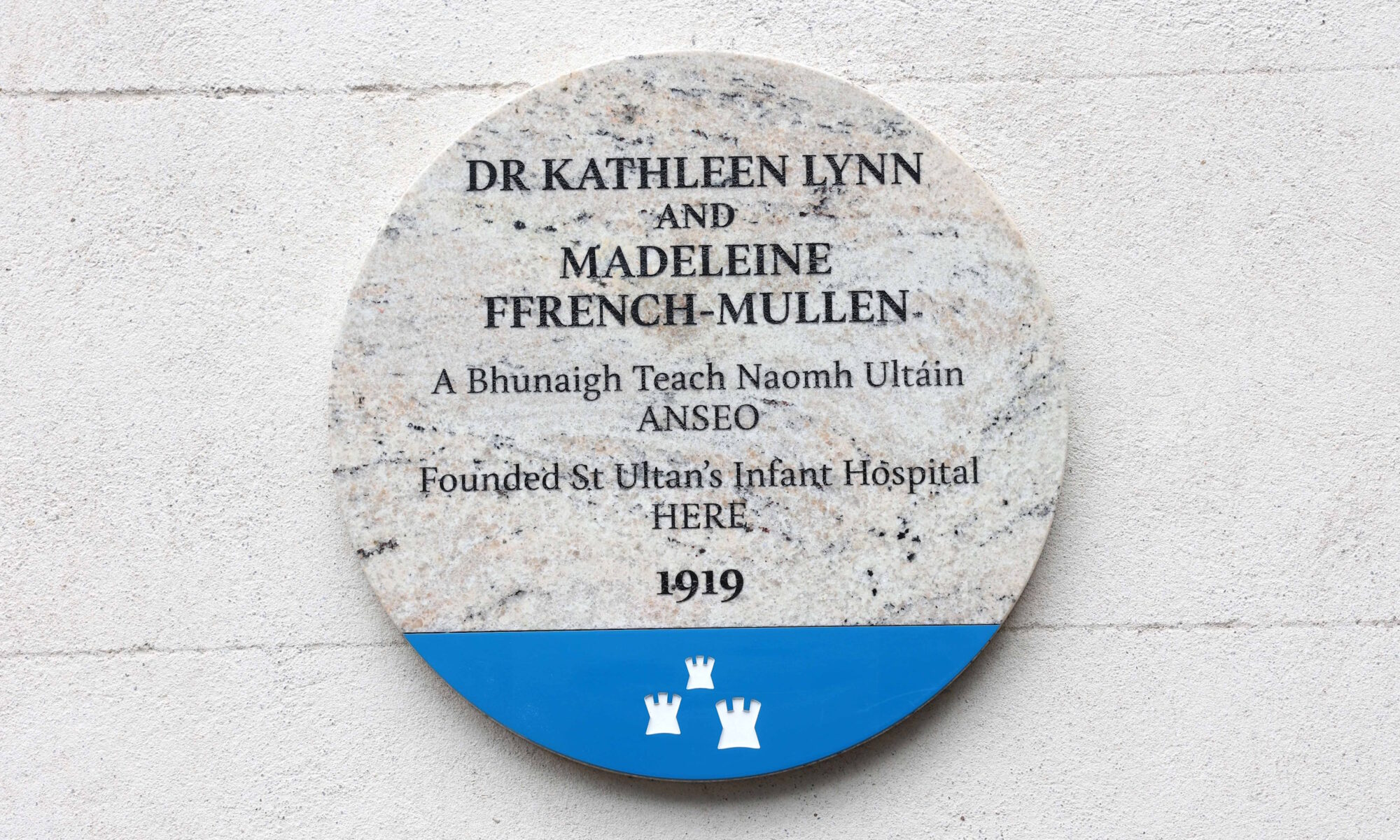On Wednesday 28th September, 2002, a Dublin City Council commemorative plaque marking the site of the medieval Saint Olave’s Church was unveiled at Fishamble Street, Dublin, by Councillor Michael Pidgeon, representing the the Lord Mayor of Dublin Caroline Conroy, and the Abassador of Norway to Ireland, Mari Sk.
Saint Olaf, the patron saint of Norway, was a young king of Norway, 1016–29, a country that had always proved difficult to unite, for largely geographical reasons, in contrast to its Scandinavian neighbour Denmark. Before becoming king he led a classic Viking-style career in the Baltic Sea area and in Normandy. For a short period he fought on behalf of King Æthelred II of England (978–1016).
Whilst in Normandy he adopted Christianity, at a time when many Icelanders were doing the same thing. On his return to Norway he seized power in warlord style and tried, sometimes by force, to get his countrymen to convert. Eventually there was a rebellion against him fostered by King Cnut of Denmark and England, and he went briefly into exile.
With Swedish help Olaf attempted to recover his kingship, but was defeated and killed at the Battle of Sticklestad, near Trondheim, on 29 July 1030. This date became Olsuk, his feast-day, and is celebrated in Norway and in the Faroe Islands, and parts of Sweden and Finland.
According to tradition, springs of water with healing properties emerged from his grave and miracles were reported. Grimkell, the English bishop of Trondheim (Nidaros) built a chapel on the site of the grave and declared him a saint on 3 August 1031.
After the accession of his son, Magnus I, in 1035 the cult spread rapidly. In Britain there are over 40 churches dedicated to St Olaf, especially in the north-east (Danelaw), the Isle of Man and the Northern and Western Isles of Scotland. The earliest documented church at York, apart from the minster, was also dedicated to St Olaf. According to the Anglo-Saxon Chronicle it was founded by Earl Siward of Northumbria (c. 1033–55). In addition a number of trading centres elsewhere came to acquire one, including London, Chester, Dublin and Waterford.
The Dublin church is not mentioned in any record until the late twelfth century, in a cartulary of St Mary’s Abbey. Its position in Fishamble Street, near the waterline at high tide in the eleventh century, suggests that it may have served as a sailor’s and trader’s church for Christian Scandinavians.
Christianity, of course, had received a major boost in the town with the foundation of the cathedral and diocese in c. 1030. St Olave’s Church could have been founded at any time from the mid-eleventh century onwards. Among the relics of Christ Church Cathedral was part of the vestment of St Olaf, possibly presented by Dublin’s first Hiberno-Norse bishop, Dúnán (c. 1030–74).
St Olave’s appears to have led an undistinguished life as a small parish church. In c. 1294 it was said to have been too poor to be taxed. By that time there had been reclamation out as far as Isolde’s Tower, enlarging the parish a little.
By the late Middle Ages the name was starting to be lost, at least in some quarters, hence St Toven’s in 1317 and St Owyn’s in 1491. It is recorded as the property of St Augustine’s Abbey in Bristol in 1533, on the eve of the Protestant Reformation.
By 1553 St Olave’s had been closed as a functioning church, though it was still remembered for another century or so. In c. 1574 there is a reference to a lease of the church or chapel of St Tullockes or St Olaves. This corruption of the name also occurs in Southwark in London, in the form Tooley Street. Cf. Scattery Island from Inis Chathaigh, the only Norse-influenced place-name in Co. Clare.
The church and its cemetery were granted to George Bowchier in 1575, i.e. it had been secularized. Speed shows St John’s Church on his map of 1610, but only houses in Fishamble Street. The last references are to the chapel or temple called St Tulloks (1619) and to a priest’s chamber (1622).
Burials were uncovered in 1939 but not examined scientifically. Richard Haworth in his essay in The Wood Quay Saga identified from newspaper evidence the precise site of the successor house in Fishamble Street.
